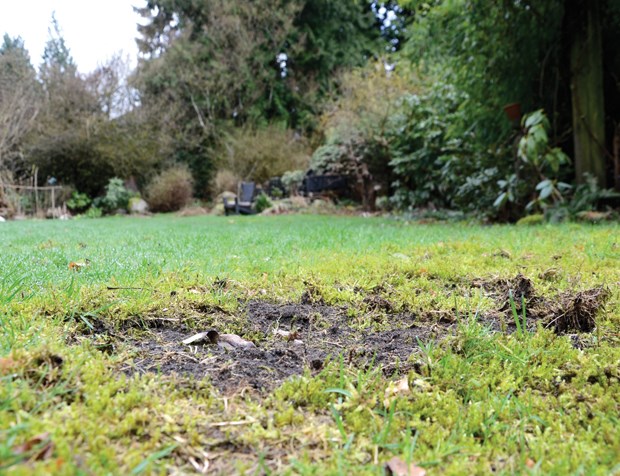Every lawn has its day, to borrow a phrase, and the lawns of the North Shore are in for a rude awakening with the arrival of the European chafer.
First found in New Westminster in 2001 and later in Vancouver, Burnaby, Coquitlam, Richmond and Delta, the European chafer is becoming a strong pest of lawns. In eastern North America, Chafer larvae are serious pests that feed on corn, potatoes, strawberries, conifers and nursery plants, as well as lawn, but here on the West Coast, the chafer has found that dinner is served on the thousands of hectares of lush green lawns across the Lower Mainland. The reports of chafer damage near 13th and Keith are only the start. All insects move and they move to where food is plentiful and there are plenty of lawns around.
Before we panic, a few facts to consider. Firstly, insects respond to the environment and eat what is easily digestible according to their life cycle.
Secondly all infestations are cyclical, meaning there will be high and lows of infestation according to breeding rates and food availability and not all lawns will be eaten. Thirdly, chafers cannot be effectively controlled with insecticides.
The European chafer (Rhizotrogus majalis) is a small tan or pale brown beetle no longer than a Canadian dime. Chafer beetles fly to find mating partners in late May or early June and each mated female lays 30-50 eggs in lawn grass. The eggs hatch in July and dig into the lawn to feed on roots, causing brown and dead patches.
The cool moist conditions of fall enable chafer grubs to feed and our mild coastal winters allow feeding in the lawn until spring when the grubs pupate into the adult beetle that flies off to mate. The few mild freezes we get here are not severe enough to kill many of the grubs, which burrow deeper into the turf during freezing temperatures but return to the surface to feed when the weather warms.
Control of the European chafer in lawns on the West Coast is still in its infancy as the industry scrambles to deal with its appearance. The primary damage of dead roots and dying patches of lawn are not the real problem for lawns infested with chafer. The real problem is the secondary pests that come to dine, the crows, starlings, skunks and raccoons that dig up the turf to eat the chafer grubs. Ironically, raccoons and crows are actually eating grubs and lowering chafer populations, but the control is hardly worth the reward after a lawn is ripped to shreds.
There are controls for European chafer but they only work if they are co-ordinated with the insect's life cycle. And the most effective control for chafers is not an option that many people will consider. The most widely recommended control for chafers is to maintain a healthy lawn, which is a broad interpretation to say the least.
Prevention is the key to controlling chafers. Start by doing the one thing that so many people are unwilling to do - grow grass longer. Chafer adults prefer to lay eggs in short, closely cropped and highly manicured turf.
Longer grass blades restrict access to the lawn's surface, preventing the beetle from laying eggs. Longer grass also prevents weed growth. Lawn grass should be grown six to eight centimetres or two-and-a-half to three inches long to help prevent chafer egg laying.
Restricting the use of chemical fertilizer (which makes plant tissue grow soft and predisposed to pest and disease attack) will also help lessen infestation.
Proper core-aeration, followed immediately by topdressing, combined with dethatching can also improve lawn health but too much of a good thing can also damage a healthy lawn.
The favoured, but perhaps not the best method, for chafer control is application of parasitic nematodes. The problem with this method is timing. The nematodes will only kill the grubs during a short window of opportunity in late July and early August. In addition, factors such as elevation, soil temperature, rainfall and soil type can impact the efficacy of the nematodes.
When applying nematodes, the lawn must be watered before application and watered lightly for two or three days after application to allow the nematodes to swim into the soil to find the chafer grubs.
Applying the nematodes on a cloudy day or in the evening helps because UV light can kill or injure the nematodes.
Ultimately, there is only one control for the chafer grub that will prevent future infestations - replacement of the lawn with some other landscape feature that chafer grubs do not like to eat. Much depends on the location of infestation, but mixed shrub and perennial beds or groundcover plantings are good alternatives for many locations.
If you must have a lawn, then artificial turf may be the only option for some locations.
Todd Major is a journeyman horticulturist, garden designer and builder, teacher and organic advocate. [email protected]



